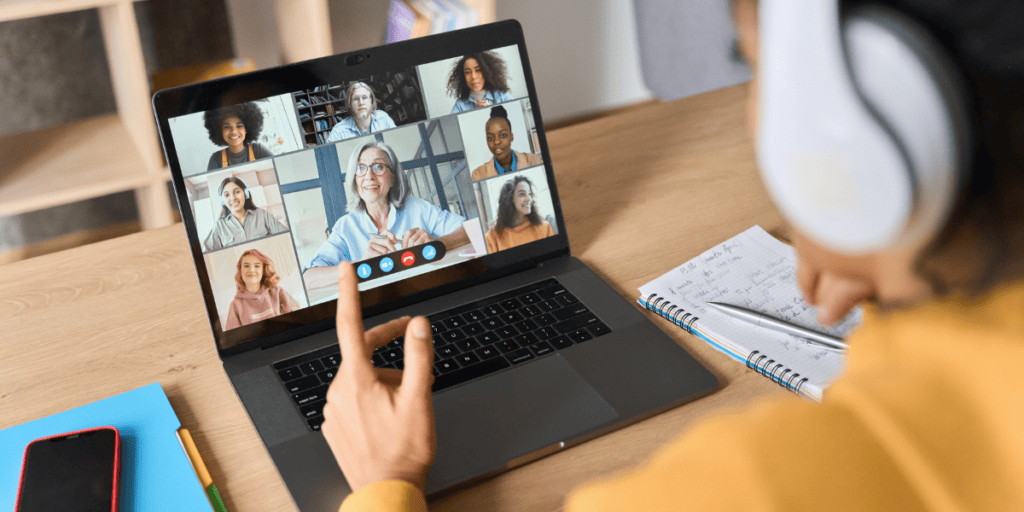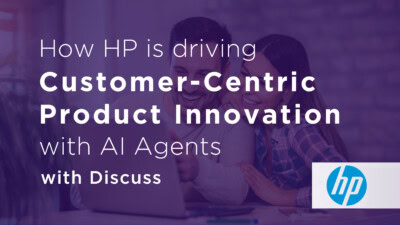Seven Tips and Tricks for Better Online Focus Groups

The pandemic accelerated adoption of digital experiences at an unprecedented rate. It seemed like the switch was flipped almost overnight and suddenly even the most reluctant-to-change industries were now operating remotely. At the height of the transition, McKinsey estimated that we vaulted five years forward in a matter of eight weeks.
So it’s not surprising that we all experienced a collective learning curve, adapting our behaviors and expectations to a new normal, one where more of life happens online. But now that we’ve settled into the cadence of a more digitally integrated world, the expectations for what’s acceptable are shifting again. And that includes the ways people engage with online research.
It’s no longer enough to simply transition physical approaches to fit digital experiences. Consumers, clients, and researchers expect more. Here are seven tips and tricks you can use to get smarter,sharper, more actionable insights by honing your approach to online focus groups.
- Get Interactive
Raise your hand if you have ever reached a point where you just couldn’t handle one more video call. If your hand is up, you’re not alone. From the twitchy feeling people get when sitting in the same place for too long to the fact that cognitive load is higher in video calls, so-called Zoom-fatigue is real, and it’s something your respondents are likely experiencing too.Instead of creating yet another zoom call, but now with a group of strangers and a demanding moderator, you have the opportunity to create an interactive experience. Use online whiteboards, such as on the Discuss platform, to have respondents type, draw, circle or highlight stimulus. Encourage respondents to use the chat from time to time to type in more thoughtful responses, then unpack them with the group. In short, interactive activities can shake up your session so it’s not just a bunch of talking heads.
- Bridge the Say/Do Gap
Advertising genius David Ogilvy liked to say that “People don’t think what they feel, don’t say what they think, and don’t do what they say.” We all know that despite our best efforts to be honest and accurate, humans are not impartial observers of our own experiences.There is power in mining into what Daniel Kahneman describes as the “remembered self” to understand the stories people tell themselves about their past experiences. But it’s also important to know what’s really going on. To do that you need to tap into what Kahneman calls “experiencing self” to get the facts. In many cases, understanding both are important to get the full picture. That’s where mixed-methodology studies come into play.Mixed methodologies offer one way to tap into the full picture. For example, holding focus groups on the Discuss platform as a companion to a mobile or in-person ethnography can allow you to capture in-the-moment experiences and pair them with deeper discussion that you can only get to via live prompts and probes.Don’t have the time or budget to be that robust? Consider participant pre-tasks to supplement your focus groups. Even a simple emailed pre-work exercise that asks a respondent to document specific behavior or choices can help you to tap into both parts of self and bridge the say/do gap.
- Engage to Co-Create Rather than Evaluate
Understanding respondent likes and dislikes on early ideas, positioning statements and concepts is important. But it often sets a narrow and defined focus. Instead, you might challenge yourself to think of your stimulus in the more literal sense, as a prompt meant to stimulate a discussion rather than a thumbs up/thumbs down reaction.Discuss makes it easy to upload images, sketches and mock-ups ahead of time. Then, using the virtual whiteboard and markup tools, respondents can engage with, build upon, and interact with the stimulus you provide. Consider prompts and activities to engage respondents’ creative rather than judgmental brains by asking questions like: “how would it be better if….” Then, allow them to discuss in an open-ended way.
- Go Deeper
Because most video calls now take place in an at-home environment where respondents feel more comfortable, it gives researchers the opportunity to really mine deeply into the emotions. Don’t be afraid to go there!To help respondents access emotion, it isn’t always enough to ask the standard moderator question, “How does that make you feel?” More often than not, respondents answer with, “good,” or “bad.” which doesn’t really tell us a whole lot, without additional probes.Consider instead leading with prompts that ask respondents to think differently about emotion, like, “what face do you make when you engage with this [product, service, or experience],” then, ask them to pick an emoji from a list shown on an interactive whiteboard or select a picture from the internet and send it to you prior to the session. Each of these approaches makes for great video content, which is then easy to find, clip, and share on Discuss to build instant empathy among your team.
- Mind Your Language, Please
No one’s saying that you have to be the thought police. But, it is important to recognize how the language that we use can influence responses. Moderators after all are supposed to be independent discussion leaders, not salespeople or advocates for a particular idea. So it’s important to make sure that you’re not leading respondents to confirm your incoming hypotheses. Even questions that seem universal like, “How has the pandemic impacted your life?” assumes that they’ve experienced impact in the first place. Instead, ask, “Have you experienced any impact from the pandemic?” Then follow up with how and why questions.On the topic of language, it’s also becoming increasingly important to create safe spaces for people to express themselves. Consider introducing yourself with your pronouns and asking respondents to do the same to ensure you create an environment where people of all identities feel welcome to show up as their authentic selves. Also, across industries, leaders are adopting inclusive wording across gender, race and ethnicity, to ensure that they are making consistent, socially responsible choices with their language.
- Stay on (side) Track
Rigidly scripted discussion guides are so last year. Instead, use integrated discussion guides that unobtrusively help you think about how you can prompt actual discussion and allow time for meaningful tangents.While allowing for side-tracks can be a tough sell to folks used to peppering respondents with a barrage of highly-defined queries, leaving time for discussion and reflection on a topic can yield unexpected results.One way to help your organization adopt this change is to actively engage your back room. Using the backroom chat feature on Discuss, observers can interact directly with the moderator to pose new questions, probe into responses and ask follow-ups. By allowing time for this interaction in sections of your guide or during specific activities, not only will you get more interesting results, you’ll also bring the team along for the journey by giving them more of a role in the process.
- Take Strategic Leaps
While consumers bring us to many new, interesting places and help us to see challenges through a fresh lens, at the end of the day, they’re never going to be able to tell brands how to do their job perfectly. That’s where the strategy comes in. Instead of looking to focus groups to offer cut-and-dried proof, think of responses as offering the clues and cues for new directions.You can let consumers inspire you to make strategic leaps. But you don’t have to go it alone. Leveraging Discuss’s new AI-driven sentiment and theme analysis tool, now you can easily look at the big picture to see what’s emerging across respondents and across focus groups to get a sense of where to go from here.From going deep to taking strategic leaps, there are many ways to amp up your focus group game. For more best practices for moderating online interviews, including creating a discussion guide that really works in an online environment and making the most of online technology, check out our ebook, “Master Moderating for Consumer Connections.”
Ready to put these tips and tricks to work for you? Reach out and book a demo today.
Ready to unlock human-centric market insights?
Related Articles

How to Facilitate Meaningful Insights: Strategies for Effective Focus Group Discussions
Conducting a worthwhile focus group requires a strong purpose and well-defined objectives. This isn’t an ordinary chat; it’s an organized…
Conducting a worthwhile focus group requires a strong purpose and well-defined objectives. This isn’t an ordinary chat; it’s an organized…

How to Optimize Engagement with a Virtual Focus Group: Strategies and Tips
Creating successful engagement in virtual focus groups starts with proper planning. This involves everything from the setup of your digital…
Creating successful engagement in virtual focus groups starts with proper planning. This involves everything from the setup of your digital…

Maximize the number of research projects completed by year’s end: Yes, it can be done
Ask most agencies managing enterprise-level market research (MRX) projects, and they’ll tell you they have a love/hate relationship with their…
Ask most agencies managing enterprise-level market research (MRX) projects, and they’ll tell you they have a love/hate relationship with their…



